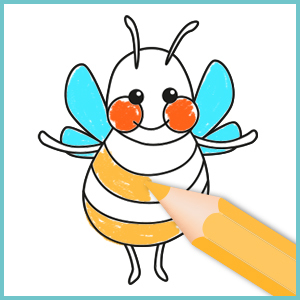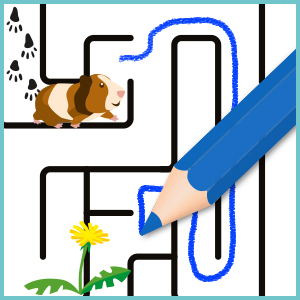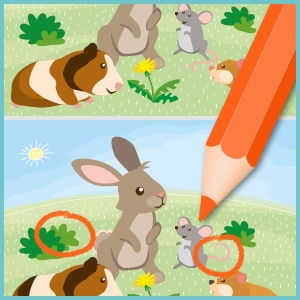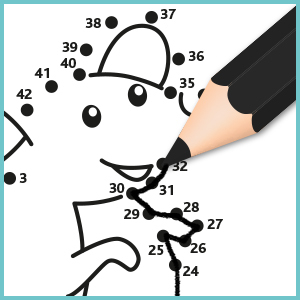How much do you know about rabbits and rodents?
28.02.2023 - Reading time: 6 minutes
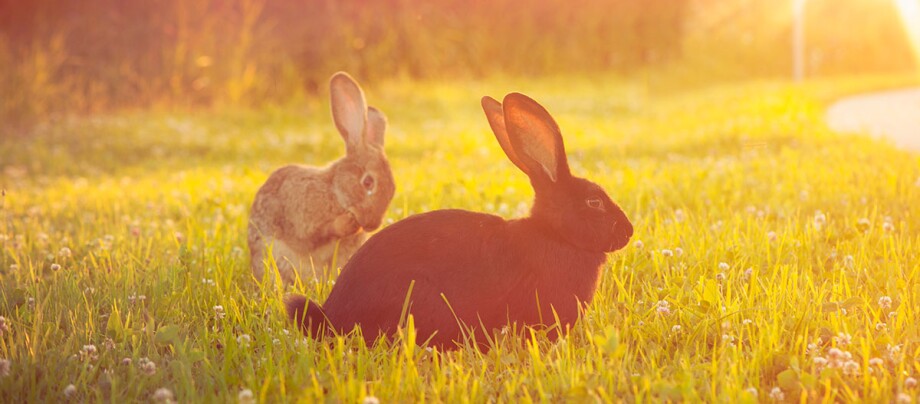
Do you keep rodents or rabbits as pets? Then there’s a good chance that you already know a great deal about these cute and fascinating small animals. We’ve compiled some facts for you that you might not be familiar with. In addition, we share with you our best craft ideas for your animal housemates so that you’ll never get bored again.
What are rodents?
Rodents are classified as mammals and have four special incisors: two in the middle of the top row of teeth and two at the bottom. These incisors grow continually, up to 5 millimetres a week! That’s why it is so important that rodents get roughage and always have something to gnaw on. Otherwise, their incisors can become too long. Outdoors, they crack nuts, fell trees or dig burrows with their powerful incisors – depending on the species of rodent. Rodents’ skulls are specially designed for powerful gnawing. This is also aided by extremely strong masticatory muscles. Rodents can be found virtually everywhere in the world apart from several remote islands and in the Antarctic.
Which rodents do you know?
You might know these popular members of the rodent family as pets:
Rodent | Activity | How to keep | Life Expectancy |
|---|---|---|---|
Guinea pig | crepuscular | minimum of two, better in a group | six to eight years |
Hamster | nocturnal | loner | up to three years |
Rat | nocturnal | minimum of two, better in a group | up to three years |
Chinchilla | nocturnal | minimum of two, better in a group | ten to 15 years |
Degu | crepuscular | minimum of two, better in a group | four to six years |
Fancy mouse | crepuscular and nocturnal | minimum of two, better in a group | up to two and a half years |
Gerbil | diurnal and nocturnal | minimum of two, better in a group | up to three years |
Chipmunk | diurnal | loner | six to ten years |
Which of these rodents do you think most enjoys a cuddle? With good, sensitive care, rats are the tamest. They enjoy contact with their owner and are happy to be stroked, lifted up and carried around. Amazing, huh?
Why are dwarf rabbits not rodents?
You’re bound to have heard that dwarf rabbits are classed as rodents. But this is not correct! Rabbits are classified as lagomorphs. Dwarf rabbits actually have two additional little teeth which grow behind the upper incisors. Rodents do not have these little teeth. If you have a rat, mouse or hamster as a pet, you might notice another difference: rodents almost always hold their food with both paws to eat it – rabbits, on the other hand, do not do this. You may even have heard that scientists are debating whether guinea pigs belong to the rodent order. The porcupine relations display several differences to other rodents. Amongst other things, they also do not hold their food with their front paws. Nevertheless, until they are officially reclassified, they will continue to be classed as rodents.
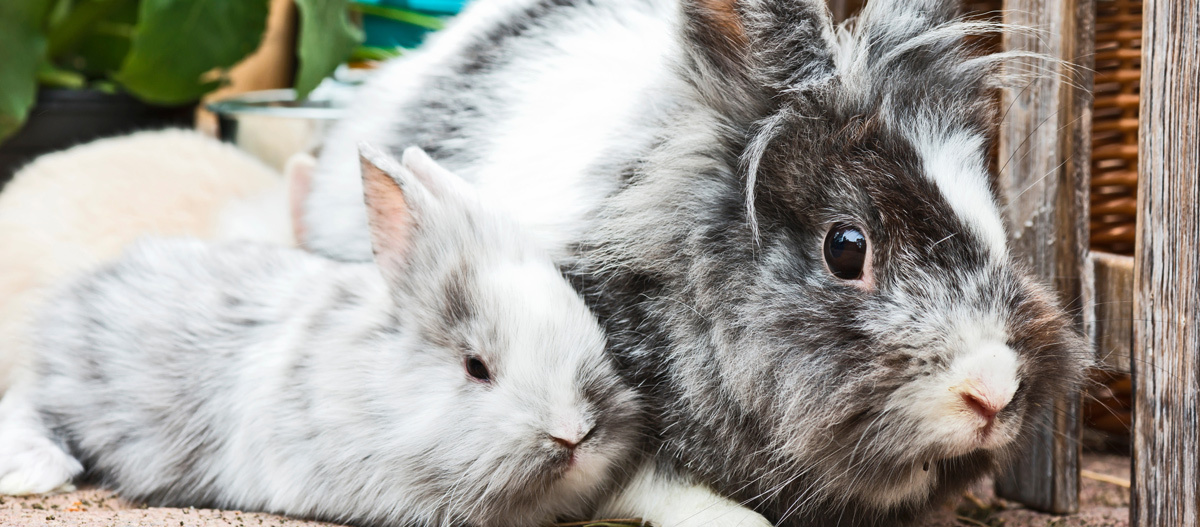
Do you know why rodents and rabbits enjoy digging so much?
In the wild, rodents and dwarf rabbits need to protect themselves from dangerous predators such as foxes or birds of prey. In their burrow, which often consists of many passageways that branch off, they feel cosy and safe. Many rodents – and particularly rabbits too – have such large paws to enable them to dig well. They also use their sharp claws and teeth when digging. Any roots which get in the way when they are digging can simply be bitten through in no time at all! Digging, therefore, is a long-standing instinct which your pets still retain.
Their self-made tunnels and hiding places always have a number of exits so that they are able to quickly escape from danger. Pretty clever, don’t you think? If you want to create an environment for your pets in which they will feel very comfortable, you need to do something similar. Offer them various little houses and hiding places with lots of entrances and exits. They can also provide a place for your animals to retreat to during squabbles. As rodents and dwarf rabbits are very curious animals and like to be able to see everything, they also enjoy sitting on roofs and observing the situation. It’s best to make a number of levels, viewing platforms and a variety of hiding places. Many rodents also like to build hiding places, tunnels or paths out of natural materials such as hay.
Our tip: Make a digging box for your rabbits or rodents. To do this, you can take, for example, a large cardboard box and cut entrances and exits into it. When you have cut out the little doors, fill the box with bedding, straw and hay. You can also use soil, sand or coconut soil. Your little treasures are sure to love it! You can make your digging box more interesting by hiding a few tasty treats in it. Are you a big craft fan? Then you can build your animals a proper digging castle complete with a tower and battlements! You can paint your castle with paints which are not toxic to animals. It’s best to ask your parents which paints you can use. Your little treasures will feel simply regal inside it!

Why do rodents and rabbits gnaw so much?
There is a simple explanation for this: the gnawing instinct is innate. The teeth that rabbits and rodents have continue growing throughout their lives. For many animal species, they can even grow several millimetres per week. If your animals do not have the opportunity to wear down their teeth by gnawing, their teeth will grow too long and can cause a great deal of pain and problems. That’s why it is so important for them to always have enough roughage, such as hay, to feed on. They have to chew it a lot and this wears their teeth down.
The branches of fruit trees, walnut trees or willow trees also provide variety and fun in their enclosure and are a welcome snack. In addition, they ensure that your little treasures’ teeth get nice and strong. However, it’s important to ask your parents whether the branches come from trees which have not been sprayed with pesticides. In particular, fruit trees are sometimes treated with products which protect against lice, fungi or beetles. However, these products can also be very harmful for your animals. That’s why you should always use only unsprayed branches.
Homemade nibbling fun: You can make this for your animals
There is no limit to your imagination, as long as you ensure that all of the materials that you use are nontoxic for your animals. To be on the safe side, use paper and natural materials. We have a few more ideas for you to keep you and your animals entertained:
- DIY activity chain: Are you familiar with our My pet and me activity chain for rodents? You can arrange the colourful elements to your heart’s content and very simply hang the chain up in the enclosure. Your animals will be amazed! You can also use it as a hiding place for snacks: you can hang herbs and wild flowers in between the individual elements
- Snack roll with tasty titbits: You can make a fun toy in no time at all using the cardboard inner part of a toilet roll. Place some tasty titbits in the middle and stuff hay into each end of the cardboard tube. Your animals will have lots of fun when they figure out how to get to the tasty treats!
- Feeding tree: You can buy feeding trees, or you can make one for your animals using a branch. You can hang salad leaves, herbs and vegetable snacks on the tree. Your animal housemates will find this very exciting, especially if they have to stretch a bit in order to reach the tasty morsels.
- Snack ball: Snack balls are often made from wicker. You can hide finely-chopped vegetables and hay in them. If your animals want to reach the food, they have to chase after the ball and either hold it or poke at it in a way that releases the food. This isn’t just physically demanding, but your little treasures also have to spend time figuring out how to do it.
Have you made something amazing for your rodents or rabbits that you would like to show us? Then post a photo on Instagram – we look forward to your ideas!
Fun to download
On your pencils, get set … go! Whether you want to find the fastest way through the maze for your darling, draw by numbers or colour in your animal friends: Here are some great templates to download. Have fun!
Deep in the Labyrinth
How the hell do we get out of here? Your favourite animals need you: Lead them straight out into the open!
